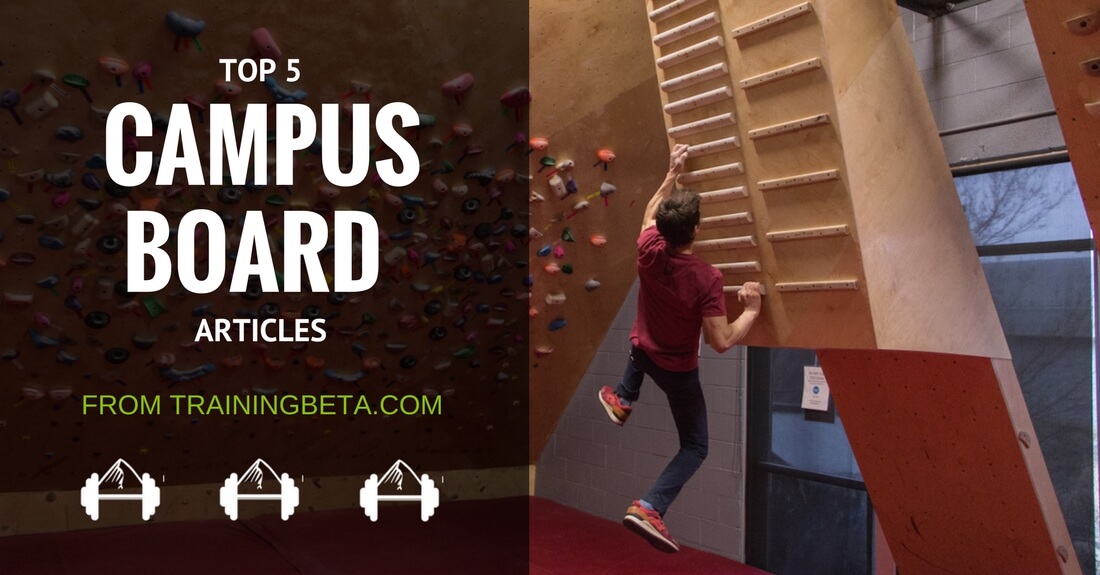One of the most famous forms of climbing training is campusing. Campus training was invented by legendary German climber Wolfgang Güllich and you can now find campus boards in almost every climbing gym.
When done properly, campusing is a highly effective form of power training. However, when done incorrectly, campusing can be extremely dangerous and is probably the single type of climbing training responsible for the most injuries.
To help you understand if you are ready to train on the campus board and how to do it properly, here are the top 5 campusing related article from the TrainingBeta Blog.
Top 5 Articles on Campusing:
-
5 Errors on the Campus Board
- “This is a video describing 5 errors that are really pretty common with training on the campus board.”“Some of them might surprise you….and could explain why you may get injured on the campus board (think elbows, shoulders, fingers).” – Katy Dannenberg
-
Campus Training with Will Anglin
-
“Here is a basic checklist to help you assess whether you are in a good position to consider campus training:”
Campus Readiness Checklist:
HEALTHY AND MOBILE FINGERS/ WRISTS/ ELBOWS/ SHOULDERS
AGE 16 OR OLDER
CLIMBING FOR 2+ YEARS
CLIMBING V7-8 OR 5.12+/13- CONSISTENTLY
CAN EASILY PERFORM 10 PULL-UPS ON DESIRED RUNG SIZE – Will Anglin
-
-
Campusing, Part 1: For Power…Big Rungs, Big Moves.
- “Explosive Power. This is the main reason for which I prescribe campusing, and will be the focus of the workouts I describe. Nearly everyone I direct to the campus board, for the large majority of their workout, stays on the biggest rungs (we use the Metolius Large Wooden Rungs, which are 1 1/4″ deep, incut side up), myself included. I’ve only recently moved onto the smaller rungs, because I’ve maxed out a few exercises on the larger ones.” – Kris Hampton
-
- Galina gives a checklist she recommends for determining whether or not campus board training is for you:
I have been climbing for at least 18 months.I am at least 16 years old.
I have not recently had reoccurring pain in my fingers, elbows, or shoulders.
I have plateaued.
I want to get STRONG!
-
Campus Training 201 with Will Anglin
- “In climbing one of the ways we take advantage of the SSC is through the use of countermovements. A countermovement is a relatively small movement in the opposite direction of the target hold in order to build tension in the muscle for the move in the desired direction. Another way to describe it is the “wind-up” before going for a move. When a climbers sinks down before a dyno, this is a countermovement. The same thing happens in a more subtle way when a climber rears their head and shoulders backwards before initiating a powerful dead-point. On the campus board, many climbers naturally use countermovements by sinking down before launching to the next rung. These countermovements make up the stretch phase of the SSC.”“More advanced campus training exercises exploit the SSC by creating more forceful countermovements than the typical “wind-up” motion. To create these forceful countermovements, the climber will down-campus or “drop” into position before initiating a concentric contraction.” – Will Anglin
Cover photo: (Dan Mirsky campusing; photo credit: Matt Pincus | @mpincus87)





Leave A Comment